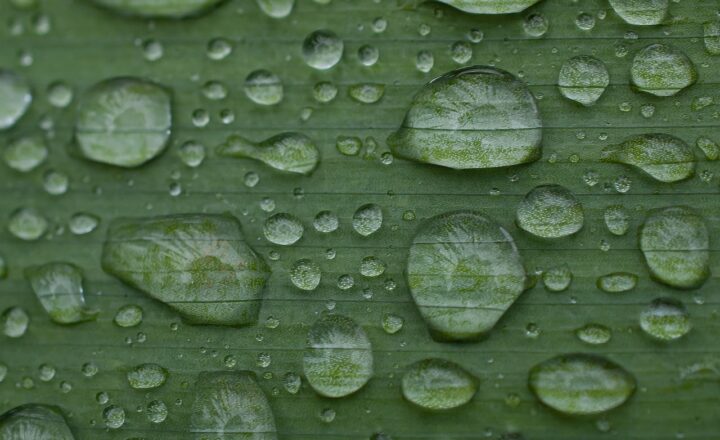Why the Ocean Is Blue: Exploring the Science Behind Water’s Color
November 14, 2024

The color of the ocean is a mesmerizing blue that has fascinated humanity for centuries. From sailors navigating vast waters to beachgoers admiring the sunlit waves, the ocean’s hue captivates our hearts and minds. But have you ever wondered why the ocean appears blue?
In this article, we will delve into the science behind the ocean’s color, exploring the factors that contribute to its stunning appearance.
1. The Role of Water Molecules
Water is a unique substance with fascinating optical properties. When sunlight penetrates the water, it interacts with the water molecules, which play a critical role in the ocean’s color.
Sunlight is composed of various colors, each with different wavelengths. As this light travels through water, molecules absorb longer wavelengths, such as red, orange, and yellow, and scatter shorter wavelengths, such as blue and green.
This absorption and scattering create a range of hues, but importantly, blue light is scattered in all directions, which is why the ocean predominantly appears blue to our eyes. Additionally, the deeper you go into the ocean, the bluer it becomes, as there is less light reaching those depths.
2. The Influence of Depth
Depth plays a vital role in determining the ocean’s color. In shallow waters, the ocean can take on various hues depending on the characteristics of the seafloor, such as sand, rocks, or aquatic plants. For instance, in tropical regions with sandy bottoms, the water may appear turquoise due to the reflection of light off the sandy seafloor.
Conversely, as you venture into deeper waters, the light becomes increasingly absorbed, and the blue wavelengths dominate. For this reason, when you are on a boat in the open ocean, the water seems to shimmer in deep blue tones, reflecting the scattering effects of light in deeper waters.
3. The Impact of Impurities
While pure water is inherently blue, the presence of impurities in the ocean affects its color perception. Factors such as algae, plankton, and sediments can change the ocean’s appearance dramatically.
For example, coastal areas with higher concentrations of algae can give the water a greenish or brownish tint. This phenomenon is often seen during algal blooms, where phytoplankton thrive and create stunning visual effects while also affecting marine ecosystems.
Similarly, sediments from river runoff can lead to a muddy appearance in certain coastal areas, further shifting the color from blue to shades of brown or green. Thus, the ocean’s hue can serve as an indicator of water quality and ecological health.
4. The Effects of Sky Color
The ocean’s appearance is not only reliant on its intrinsic properties but is also influenced by external factors like the sky. On a clear day with a bright blue sky, the ocean appears even bluer due to the reflection of the sky’s color onto the water’s surface.
Conversely, during overcast days or sunsets, the colors of the ocean shift dramatically. A sunset may paint the water in shades of red and orange, creating a breathtaking interplay of colors. This dynamic relationship illustrates how the interaction of light and the atmosphere can alter the perception of the ocean’s hue.
5. Cultural Perspectives on Ocean Color
Beyond scientific observations, cultural perceptions of the ocean’s color greatly vary across different societies. For many coastal communities, the color of the water is tied to cultural significance, either in folklore, art, or language.
In ancient myths, the ocean’s color often symbolizes mystery, depth, or even the realm of the divine. For artists, the varying shades of blue present in the ocean offer an unending source of inspiration, evoking emotions ranging from serenity to tumultuousness.
From the tranquil blues of Monet’s paintings to the vibrant compositions of modern coastal art, the color of the ocean is a captivating subject that transcends disciplines and unites viewers around a common appreciation for nature’s beauty.
6. Conclusion: The Beauty of the Blue Ocean
Understanding why the ocean appears blue goes beyond scientific principles; it is an intersection of physics, chemistry, culture, and human experience. From the scattering of light by water molecules to the influence of ocean depth, impurities, and the sky, multiple factors contribute to this enchanting phenomenon.
The next time you find yourself gazing out at the ocean, take a moment to appreciate the layers of science and beauty that give it that captivating blue hue. Beyond its color, the ocean represents a vast, interconnected ecosystem that is vital to the health of our planet. As stewards of the Earth, it is our responsibility to protect these marine environments so that future generations can continue to marvel at the beauty of the blue ocean.
As you venture forth, allow the tranquil blues to remind you of the mysteries that lie beneath the surface and the vital role the ocean plays in sustaining life on Earth.





